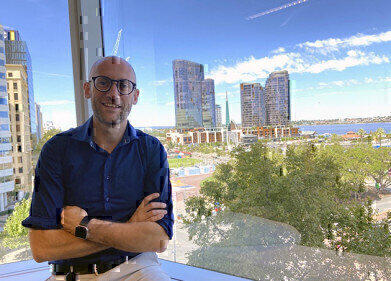Consultancy Services
Research From Sustain Throws New Light on Calculating Carbon in Buildings
Mar 18 2011
New research published by carbon reduction company Sustain (UK) shows that current methods used to calculate the carbon impacts of a building are too simplistic and do not reflect the true nature of future energy consumption.
The document, called Embodied Carbon: A Look Forward, reviews how calculations are currently made to assess operational carbon – the energy used to heat and light a building.
At the moment, calculations are based on operational carbon emissions staying the same throughout a building’s lifetime.
Sustain argues that this is unrealistic and the methodology should be changed to take account of the fact that the carbon intensity of electricity will inevitably reduce over time.
Craig Jones, senior associate at Sustain and author of the research, said:
“As building standards become increasingly stringent, it’s crucial that the building industry is able to make accurate projections about whole life carbon emissions, which are made up of both operational and embodied carbon.
“Even if building owners take absolutely no action to reduce carbon, the annual emissions of any building will reduce over time because the carbon intensity of an electricity unit will inevitably decrease as we strive to meet national and global carbon reduction targets.
“This means that operational carbon is being hugely over-estimated when it comes to calculating whole life carbon emissions of a building.
“With the results from this study and the rise of zero carbon homes it’s our view that there needs to be a stronger focus on measuring and reducing embodied carbon – that means tackling carbon from activities that relate to the production and construction of materials as well as whole buildings.”
As part of its research, Sustain carried out analysis to assess greenhouse gas emissions from two buildings – a typical new home and a new build primary school – between now and 2050.
Using calculation methods currently used by the building industry, the operational carbon of the new home was over-estimated by almost 50 per cent.
The findings from the school case study are even more dramatic with operational carbon over-estimated by almost 95 per cent.
“In the light of this research, the building industry needs to look more closely at embodied carbon of new buildings,” said Craig.
“As operational carbon decreases, tackling embodied carbon presents an opportunity to improve dramatically the environmental credentials of new buildings.”
Events
IWA World Water Congress & Exhibition
Aug 11 2024 Toronto, Canada
Aug 25 2024 Stockholm, Sweden and online
Sep 03 2024 Mexico City, Mexico
Sep 03 2024 Mexico City, Mexico
Sep 03 2024 San Diego, CA, USA














